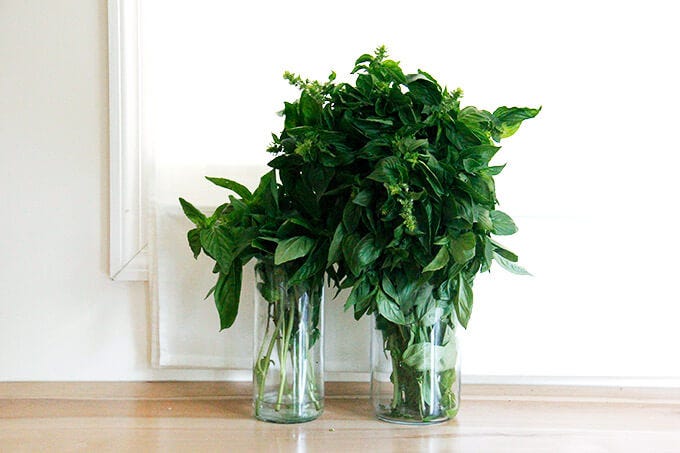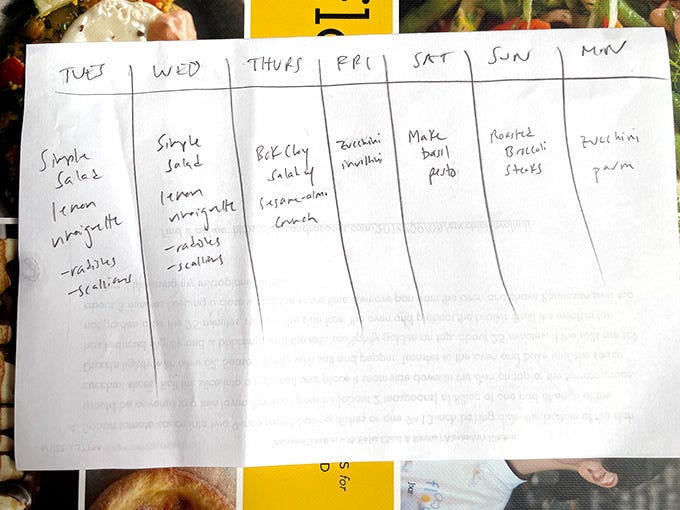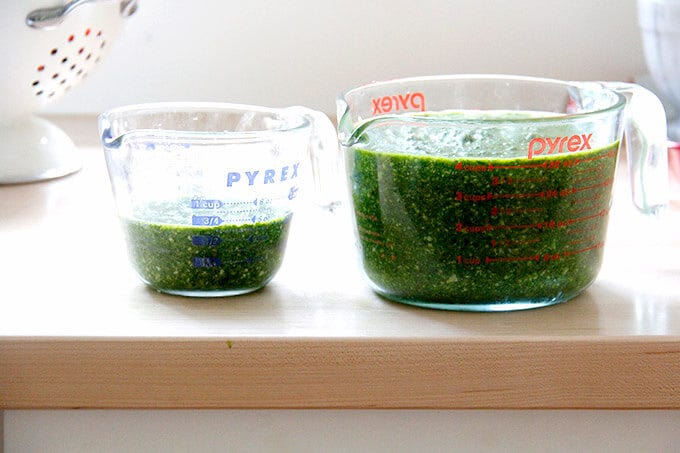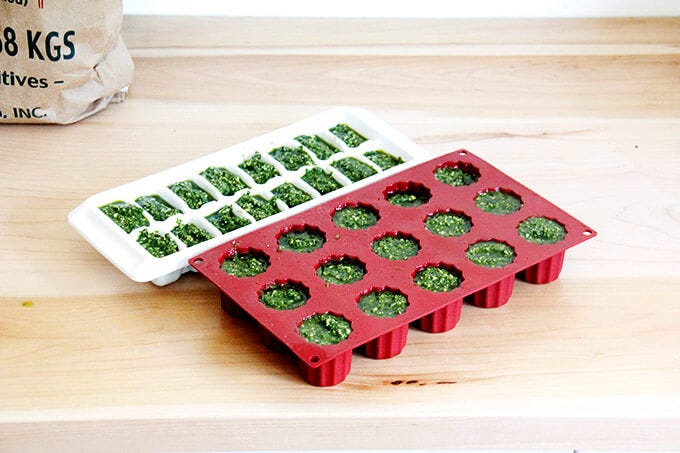In my 16 years of belonging to farm shares, I have learned many lessons, foremost that vegetables are not forgiving. In a blink, the bag of arugula will shrivel into a ball you could stuff in your pocket. All at once, the avocados will ripen. The carrots will limp. The herbs will blacken. The asparagus will rot. The head of celery will collapse, becoming a sad floppy mop.
It’s the worst feeling for many reasons, namely the waste but also the loss of opportunity to eat something delicious.
Over the years I’ve learned that successful farm sharing — i.e. using your weekly haul to its full potential — requires a plan. And it’s not difficult: a simple plan goes a long way. These days, guided by the three tenets listed below, rarely do I allow a sprig of parsley to go to waste.
3 Tenets of Successful Farm Sharing
Proper storage is half the battle.
A simple plan will set you free.
Preserve what you can. Give away what you can’t.
Proper storage is half the battle.
A successful week of farm sharing begins the moment you bring your vegetables home. Storing vegetables properly will make them last longer. And that is the name of the game when you receive a boatload of vegetables all at once.
These are some steps to take immediately upon bringing your vegetables home:
Use scissors to snip away all rubber bands. Remove any twisty wire bands.
Separate the roots from the greens: carrots, beets, radishes, turnips, etc.
Pool the trimmed greens together. This will give you a large enough quantity of greens to use in a recipe, such as this one.
Store appropriately. Most vegetables do best in the fridge but some do not, and it’s not always black and white. For instance, my CSA basil lasts for weeks when stored out of the fridge in a glass filled with a small amount of water. This technique is not as successful with other varieties of basil. (I’m researching why … stay tuned.) Here are some general rules:
In the fridge: head lettuces, Swiss chard and kale, bok choy and tatsoi, cilantro and parsley, scallions, cabbage, radishes, turnips, Brussels sprouts, celery, beets, peppers, broccoli, cauliflower, and summer squashes. I like to store these vegetables in produce bags in the vegetable bins.
Out of the fridge: tomatoes, eggplant, potatoes, sweet potatoes, garlic, and winter squash.
A simple plan will set you free.
Assess your selection of vegetables and make note of which vegetables tend to tire the most quickly: often the tender greens and lettuces as well as green beans and snap peas or snow peas.
Make a rough meal plan — keep it simple! — based on the durability of the vegetables: you’ll want to eat those green beans, peas, and tender lettuces within the first few days of picking up your share. Save the heartier vegetables for later in the week.
Make a shopping list: Often with farm shares you get not enough of one thing and an overload of another. When this happens, you may need to supplement your share with a few more zucchini or snap peas or broccoli heads, etc. Having a rough meal plan helps you shop more efficiently.
Preserve what you can. Give away what you can’t.
When you know you won’t be able to eat all of your farm share produce immediately, it’s helpful to know how to preserve it for the weeks and months ahead. Don’t worry, you don’t have to process cans of your produce in a water bath to make it last. Here are some simple ways to preserve your produce:
Make quick pickles. I have used this simple recipe for years for so many vegetables — cauliflower, carrots, peppers, onions, turnips, radishes, beets cucumbers — and it is a lifesaver. It is the only pickle recipe I use for its simplicity and effectiveness.
Make herb sauces. Freeze them. Here are three I love:
Before you throw away tired greens, try to revive them: a soak in cold water works wonders.
Finally: give away what you won’t or can’t use. If at the start of the week, you know you are going to be out of town or will be eating out for several meals, give away your produce. Similarly, if there are vegetables you know you simply do not like, give them away. Many CSA pick-up sites have “swap” boxes, where you can leave produce you don’t care for and take something you prefer.
Fellow Farm Sharers, I’ll be sending out the next newsletter, which will include recipes geared to early season farm shares, on Tuesday, when I pick up my first CSA of the season. In the meantime, please share in the comments any tips and tricks you have picked up over the years that have helped you — and your vegetables! — on your farm share journey.









Love this — what an incredible resource it’s going to be!
Have been a veg. gardener for too many years to count. Would grow and preserve a years worth of food! All I ever bought was meats. Can't do it any more but love to see how you use a weekly box up, as there are a few farmers markets around. Maybe I could utilize some of your techniques. I'm not up to doing 100 qts. of string beans any more! Love your site and recipes. Just did your chicken brine last nite and it didn't disappoint! Thank you.